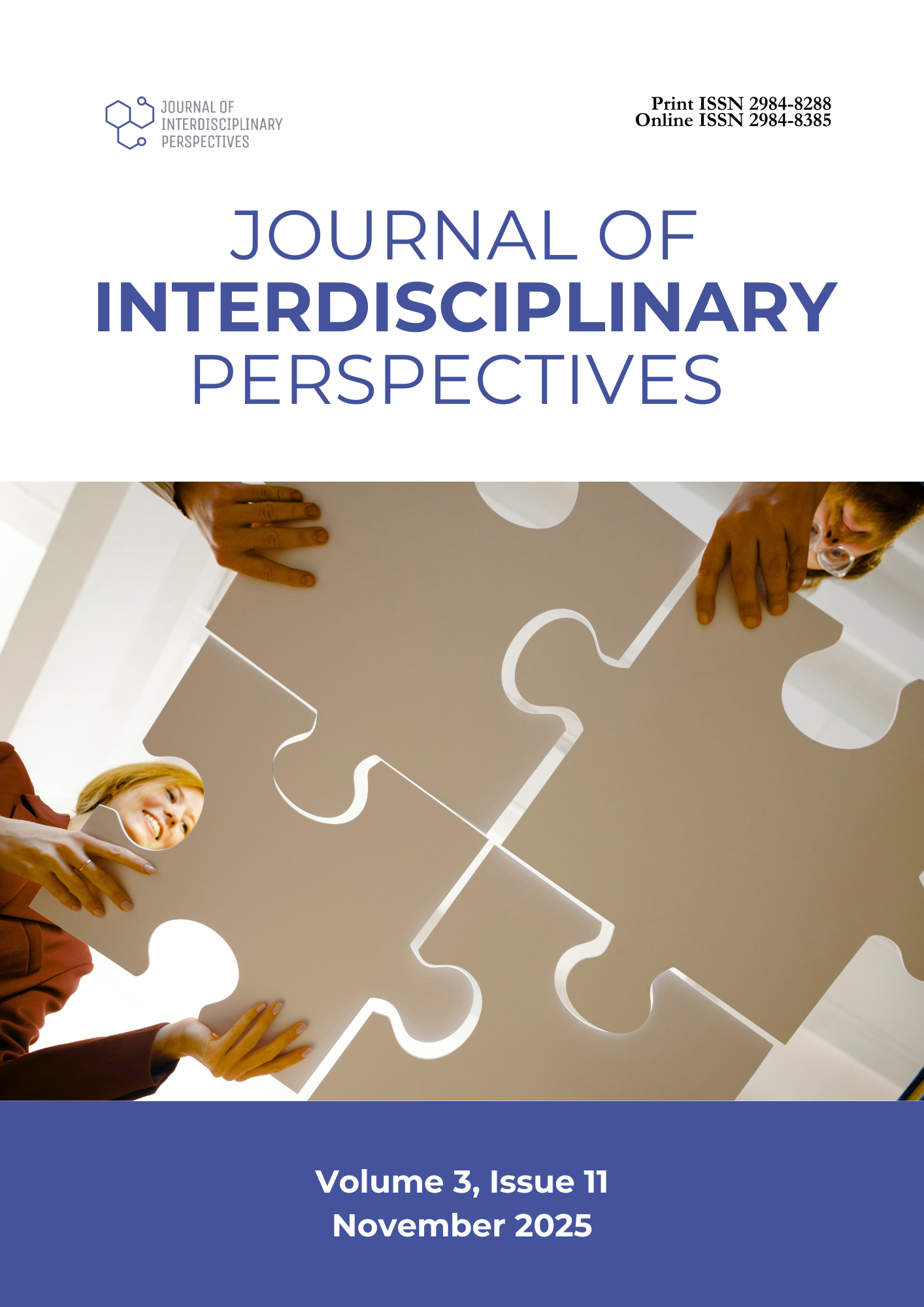Savoring Identity: The Role of Bulalo’s Food Quality on Cultural Motivation Among Tourists in Tagaytay
DOI:
https://doi.org/10.69569/jip.2025.676Keywords:
Bulalo, Cultural motivation, Food quality, Quantitative comparative-correlational research, Tagaytay CityAbstract
Bulalo, a traditional Filipino beef shank soup, is a culinary icon and cultural emblem in Tagaytay City, contributing significantly to local identity and to the growth of food tourism. Despite its popularity, limited research has examined the relationship between the perceived quality of Bulalo and tourists' cultural motivations. This study addresses this gap by investigating how food quality attributes—taste, presentation, authenticity, and hygiene—influence cultural engagement among visitors. Using a quantitative comparative-correlational research design, structured questionnaires were administered to 385 tourists in Tagaytay. Descriptive statistics, Spearman Rho correlation, and linear regression were utilized to analyze the data. Findings revealed that taste and hygiene were the most highly rated attributes and demonstrated the strongest correlations with cultural motivation (r = 0.51 and r = 0.52, respectively). All food quality dimensions were significantly associated with tourists’ cultural motivation (p < 0.001), affirming that perceived culinary quality enhances cultural interest and engagement. The study also found that the 18–24 age group had the highest motivation for food experiences. These results underscore the vital role of maintaining and promoting food quality standards—particularly in taste, authenticity, and hygiene—to strengthen cultural tourism in Tagaytay. The study concludes that improving the sensory and safety aspects of Bulalo can further deepen tourists' cultural connection and recommends that local food establishments prioritize these attributes to support sustainable culinary tourism initiatives.
Downloads
References
Ab Karim, S., & Chi, C. G. (2020). Culinary tourism as a destination attraction: An empirical examination of destinations’ food image. Journal of Hospitality Marketing & Management, 29(3), 305–324. https://doi.org/10.1080/19368623.2019.1645073
Choe, J. Y. J., & Kim, S. (2022). Examining tourists’ memorable local food experiences: An application of the stimulus-organism-response model. International Journal of Contemporary Hospitality Management, 34(5), 1894–1916. https://doi.org/10.1108/IJCHM-04-2021-0464
Hernández-Rojas, R. D., Folgado-Fernández, J. A., & Palos-Sánchez, P. R. (2021). Influence of income level on motivations for culinary tourism. Sustainability, 13(19), 10857. https://doi.org/10.3390/su131910857
Hurdawaty, R., Dahana, W. D., & Farradia, Y. (2025). Understanding revisit intention in local culinary tourism: The mediating role of memorable culinary tourism experience and destination image. Tourism and Hospitality, 6(4), 184. https://doi.org/10.3390/tourhosp6040184
Jonson, A. P., & Masa, J. R. (2023). Gastronomicscape: Determinants of gastronomic tourism experience and loyalty. African Journal of Hospitality, Tourism and Leisure, 12(3), 1127–1144. https://doi.org/10.46222/ajhtl.19770720.421
Kalenjuk Pivarski, B., Paunić, M., Šarenac, A., Šmugović, S., Mlinarević, M., Ivanović, V., Marjanović, Ž., Pavlović, D., Tekić, D., Ðerčan, B., Tešanović, S., & Gagić Jaraković, S. (2024). The influence of gastronomic identity factors on food tourism development in the Republic of Serbia and Bosnia and Herzegovina. Frontiers in Nutrition, 10, 1335943. https://doi.org/10.3389/fnut.2023.1335943
Kovalenko, A., Dias, Á., Pereira, L., & Simões, A. (2023). Gastronomic experience and consumer behavior: Analyzing the influence on destination image. Foods, 12(2), 315. https://doi.org/10.3390/foods12020315
Lee, S., Kim, J., & Kim, S. (2021). The effect of local food consumption value on tourists’ cultural motivation and loyalty. Sustainability, 13(4), 1902. https://doi.org/10.3390/su13041902
Lopez, M. N. S. (2024). Food tourism as a driver of economic and cultural development in Nueva Ecija, Philippines. International Journal of Science and Research Archive, 13(1), 1994–2012. https://doi.org/10.30574/ijsra.2024.13.1.1863
Lyu, S. O., & Law, R. (2020). Gender differences in food tourism motivation and satisfaction. Current Issues in Tourism, 23(15), 1891–1906. https://doi.org/10.1080/13683500.2019.1638352
Malik, N., Abbasi, A. Z., Sohail, M. S., Abbasi, G. A., & Ting, D. H. (2024). How “inspired” are customers to order from mobile food delivery apps? Soliciting the stimulus–organism–response (S–O–R) paradigm. Aslib Journal of Information Management. Advance Online Publication. https://doi.org/10.1108/AJIM-10-2023-0417
Narangajavana Kaosiri, Y., Sangkakorn, K., & Chen, J. S. (2021). Exploring food quality, authenticity, and satisfaction in culinary tourism. Tourism Recreation Research, 46(2), 139–152. https://doi.org/10.1080/02508281.2020.1746841
Pérez-Gálvez, J. C., Granda, M. J., & López-Guzmán, T. (2021). Local gastronomy, culture, and tourism sustainability: A structural model in Southern Spain. Sustainability, 13(7), 3924. https://doi.org/10.3390/su13073924
Rahman, M. K., Islam, M. A., & Omar, S. I. (2021). Gender and tourists’ intention toward halal food consumption: Applying the theory of planned behavior. Tourism Management Perspectives, 37, 100778. https://doi.org/10.1016/j.tmp.2020.100778
Sánchez-Sánchez, M. -D., de Pablos-Heredero, C., & Montes-Botella, J. L. (2025). Contributions of sustainable tourist behavior in food events to the cultural identity of destinations. Tourism and Hospitality, 6(2), 93. https://doi.org/10.3390/tourhosp6020093
Tort, N. (2023). Food tourism: A systematic analysis. Tourism and Heritage Journal, 5(8), 1–14. https://doi.org/10.1344/THJ.2023.5.8
Zhang, Y., Xu, X., Lee, T. J., & Li, Z. (2022). Assessing the impact of perceptions of hygiene on tourists’ attitudinal loyalty to ethnic food. British Food Journal, 124(12), 4847–4867. https://doi.org/10.1108/BFJ-05-2021-0543
Zhu, Y., Zhu, L., & Weng, L. (2024). How do tourists’ value perceptions of food experiences influence their perceived destination image and revisit intention? A moderated mediation model. Foods, 13(3), 412. https://doi.org/10.3390/foods13030412
Downloads
Published
How to Cite
Issue
Section
License
Copyright (c) 2025 Journal of Interdisciplinary Perspectives

This work is licensed under a Creative Commons Attribution-NonCommercial 4.0 International License.









